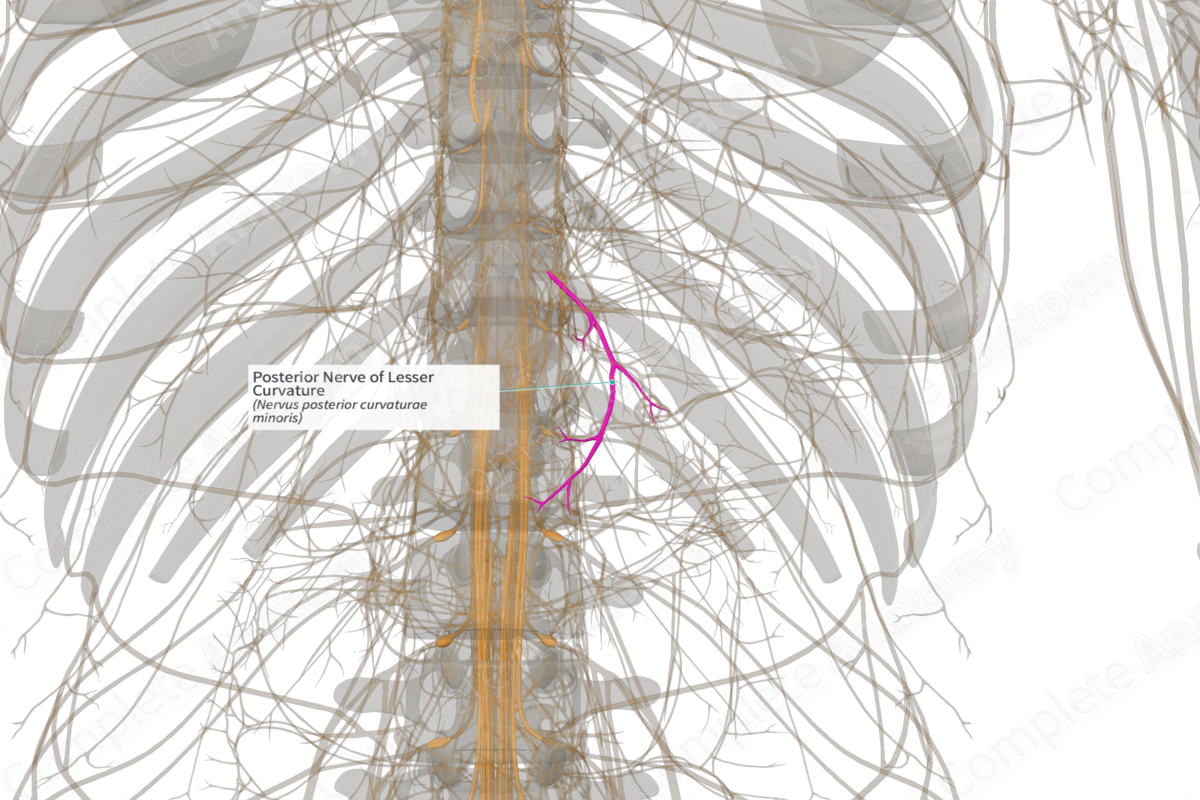
Quick Facts
Origin: Posterior gastric branches of the posterior vagal trunk.
Course: Passes over the posterior body of the stomach along the lesser curvature.
Branches: None.
Supply: Mixed nerve. Visceral sensory: conveys sensation from the posterior stomach along the lesser curvature. Parasympathetic: innervates smooth muscle and secretory cells of the posterior stomach along the lesser curvature.
Related parts of the anatomy
Origin
The posterior nerve of the lesser curvature is the main gastric branch of the posterior vagal trunk. It is a mixed nerve and contains visceral sensory fibers that originate in several layers of the stomach and parasympathetic efferent fibers originating in the posterior nucleus of the vagus nerve within the medulla oblongata (Ratcliffe, Farrar and Fox, 2011).
Course
The posterior nerve of the lesser curvature runs along the posterior surface of the lesser curvature of the stomach. It terminates in the region of the posterior pylorus, forming a crow’s foot like nerve structure.
Branches
The posterior nerve of the lesser curvature is often considered an unbranched terminal nerve. However, several posterior gastric branches can arise directly from this nerve.
Supplied Structures
The posterior nerve of the lesser curvature is a mixed nerve that conveys both visceral sensory fibers and parasympathetic efferent fibers. The visceral sensory afferents convey information from the lesser curvature and body of the stomach. The parasympathetic efferent fibers innervate the smooth muscle of the posterior body of the stomach along the lesser curvature, and secretory cells in the mucosa underlying the same region.
References
Ratcliffe, E. M., Farrar, N. R. and Fox, E. A. (2011) 'Development of the vagal innervation of the gut: steering the wandering nerve', Neurogastroenterology and motility : the official journal of the European Gastrointestinal Motility Society, 23(10), pp. 898-911.



